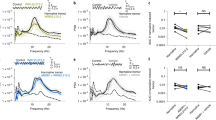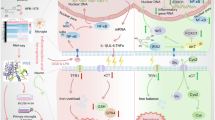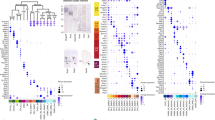Abstract
Aim:
To explore whether the synthetic cannabinoid receptor agonist WIN55,212-2 could protect oligodendrocyte precursor cells (OPCs) in stroke penumbra, thereby providing neuroprotection following permanent focal cerebral ischemia in rats.
Methods:
Adult male SD rats were subjected to permanent middle cerebral artery occlusion (p-MCAO). The animals were administered WIN55,212-2 at 2 h, and sacrificed at 24 h after the ischemic insult. The infarct volumes and brain swelling were assessed. The expression of cannabinoid receptor type 1 (CB1) in the stroke penumbra was examined using Western blot assay. The pathological changes and proliferation of neural glial antigen 2-positive OPCs (NG2+ cells) in the stroke penumbra were studied using immunohistochemistry staining.
Results:
p-MCAO significantly increased the expression of CB1 within the stroke penumbra with the highest level appearing at 2 h following the ischemic insult. Administration of WIN55,212-2 (9 mg/kg, iv) significantly attenuated the brain swelling, and reduced the infarct volume as well as the number of tau-immunoreactive NG2+ cells (tau-1+/NG2+ cells) in the stroke penumbra. Moreover, WIN55,212-2 significantly promoted the proliferation of NG2+ cells in the stroke penumbra and in the ipsilateral subventricular zone at 24 h following the ischemic insult. Administration of the selective CB1 antagonist rimonabant (1 mg/kg, iv) partially blocked the effects caused by WIN55,212-2.
Conclusion:
Tau-1 is expressed in NG2+ cells following permanent focal cerebral ischemic injury. Treatment with WIN55,212-2 reduces the number of tau-1+/NG2+ cells and promotes NG2+ cell proliferation in the stroke penumbra, which are mediated partially via CB1 and may contribute to its neuroprotective effects.
Similar content being viewed by others
Log in or create a free account to read this content
Gain free access to this article, as well as selected content from this journal and more on nature.com
or
References
Arai K, Lo EH . Oligovascular signaling in white matter stroke. Biol Pharm Bull 2009; 32: 1639–44.
Leonardo P, Garcia JH, Gutierrez JA . Cerebral white matter is highly vulnerable to ischemia. Stroke 1996; 27: 1641–6.
Skoff RP, Bessert DA, Barks JD, Song D, Cerghet M, Silverstein FS . Hypoxic-ischemic injury results in acute disruption of myelin gene expression and death of oligodendroglial precursors in neonatal mice. Int J Devl Neurosci 2001; 19: 197–208.
Mekhail M, Almazan G, Tabrizian M . Oligodendrocyte-protection and remyelination post-spinal cord injuries: a review. Prog Neurobiol 2012; 96: 322–39.
Imai H, Masayasu H, Dewar D, Graham DI, Macrae IM . Ebselen protects both gray and white matter in a rodent model of focal cerebral ischemia. Stroke 2001; 32: 2149–54.
Guimarães JS, Freire MA, Lima RR, Picanço-Diniz CW, Pereira A, Gomes-Leal W . Minocycline treatment reduces white matter damage after excitotoxic striatal injury. Brain Res 2010; 1329: 182–93.
Klein C, Kramer EM, Cardine AM, Schraven B, Brandt R, Trotter J . Process outgrowth of oligodendrocytes is promoted by interaction of fyn kinase with the cytoskeletal protein tau. J Neurosci 2002; 22: 698–707.
Nishiyama A, Komitova M, Suzuki R, Zhu X . Polydendrocytes (NG2 cells): multifunctional cells with lineage plasticity. Nat Rev Neurosci 2009; 1: 9–22.
Mangin JM, Gallo V . The curious case of NG2 cells: transient trend or game changer? ASN Neuro 2011; 3: e00052.
Hillard CJ . Role of cannabinoids and endocannabinoids in cerebral ischemia. Curr Pharm Des 2008; 23: 2347–61.
Koizumi J, Yoshida Y, Nakazawa T, Ooneda G . Experimental studies of ischemic brain edema: 1. A new experimental model of cerebral embolism in rats in which recirculation can be introduced in the ischemic area. Jpn Stroke J 1986; 8: 1–8.
Longa EZ, Weinstein PR, Carlson S, Cummins R . Reversible middle cerebral artery occlusion without craniectomy in rats. Stroke 1989; 20: 84–91.
Ulrich D and Group, Members on the MCAO-SOP. Standard operating procedures (SOP) in experimental stroke research: SOP for middle cerebral artery occlusion in the mouse. Available from Nature Precedings <http://hdl.handle.net/10101/npre.2009.3492.1> (2009).
Wojtowicz JM, Kee N . BrdU assay for neurogenesis in rodents. Nat Protoc 2006; 3: 1399–405.
Leker RR, Gai N, Mechoulam R, Ovadia H . Drug-induced hypothermia reduces ischemic damage: effects of the cannabinoid HU–210. Stroke 2003; 34: 2000–6.
Oida Y, Hamanaka J, Hyakkoku K, Shimazawa M, Kudo T, Imaizumi K, et al. Post-treatment of a BiP inducer prevents cell death after middle cerebral artery occlusion in mice. Neurosci Lett 2010; 484: 43–6.
Kramer M, Dang J, Baertling F, Denecke B, Clarner T, Kirsch C, et al. TTC staining of damaged brain areas after MCA occlusion in the rat does not constrict quantitative gene and protein analyses. J Neurosci Methods 2010; 187: 84–9.
Benjamin DH, Theo DP, Gary KS . Neurogenesis in rats after focal cerebral ischemia is enhanced by indomethacin. Stroke 2005; 36: 2718–24.
Solbrig MV, Fan Y, Hermanowicz N, Morgese MG, Giuffrida A . A synthetic cannabinoid agonist promotes oligodendrogliogenesis during viral encephalitis in rats. Exp Neurol 2010; 226: 231–41.
Hu B, Wang Q, Chen Y, Du J, Zhu X, Lu Y, et al. Neuroprotective effect of WIN55,212-2 pretreatment against focal cerebral ischemia through activation of extracellular signal-regulated kinases in rats. Eur J Pharmacol 2010; 645: 102–7.
Taupin P . BrdU immunohistochemistry for studying adult neurogenesis: Paradigms, pitfalls, limitations, and validation. Brain Res Rev 2007; 1: 198–214.
Zhang L, Michael C, Ruilan Z, Lei W, Jing Z, Ying W . Erythropoietin amplifies stroke-induced oligodendrogenesis in the rat. PloS One 2010; 6: e11016.
Anke P, Nadine J, Otto WW, Christiane F . Identification of ischemic regions in a rat model of stroke. PLoS One 2009; 4: e4764.
McMahon LR . Characterization of cannabinoid agonists and apparent pA2 analysis of cannabinoid antagonists in rhesus monkeys discriminating Delta9-tetrahydrocannabinol. J Pharmacol Exp Ther 2006; 319: 1211–8.
Ken A, Eng HL . Experimental models for analysis of oligodendrocyte pathophysiology in stroke. Exp Transl Stroke Med 2009; 1: 6.
Zehr C, Lewis J, McGowan E, Crook J, Lin WL, Godwin K, et al. Apoptosis in oligodendrocytes is associated with axonal degeneration in P301L tau mice. Neurobiol Dis 2004; 3: 553–62.
Rico B, Beggs HE, Schahin-Reed D, Kimes N, Schmidt A, Reichardt LF . Control of axonal branching and synapse formation by focal adhesion kinase. Nat Neurosci 2004; 7: 1059–69.
Mandell JW, Banker GA . A spatial gradient of tau protein phosphorylation in nascent axons. J Neurosci 1996; 16: 5727–40.
Azevedo FA, Carvalho LR, Grinberg LT, Farfel JM, Ferretti RE, Leite RE, et al. Equal numbers of neuronal and nonneuronal cells make the human brain an isometrically scaled-up primate brain. J Comp Neurol 2009; 513: 532–41.
Zambrano CA, Egaña JT, Núñez MT, Maccioni RB, González-Billault C . Oxidative stress promotes tau dephosphorylation in neuronal cells: the roles of cdk5 and PP1. Free Radic Biol Med 2004; 36: 1393–402.
Liu R, Pei JJ, Wang XC, Zhou XW, Tian Q, Winblad B, et al. Acute anoxia induces tau dephosphorylation in rat brain slices and its possible underlying mechanisms. J Neurochem 2005; 94: 1225–34.
Idan-Feldman A, Ostritsky R, Gozes I . Tau and caspase 3 as targets for neuroprotection. Int J Alzheimers Dis 2012; doi:10.1155/2012/493670.
Liu XA, Liao K, Liu R, Wang HH, Zhang Y, Zhang Q, et al. Tau dephosphorylation potentiates apoptosis by mechanisms involving a failed dephosphorylation/activation of Bcl-2. J Alzheimers Dis 2010; 19: 953–62.
Molina-Holgado E, Vela JM, Arévalo-Martín A, Almazán G, Molina-Holgado F, Borrell J . Cannabinoids promote oligodendrocyte progenitor survival: involvement of cannabinoid receptors and phosphatidylinositol-3 kinase/Akt signaling. J Neurosci 2002; 22: 9742–53.
Xu X, Wang P, Zou X, Li D, Fang L, Gong K, et al. The effects of sympathetic outflow on upregulation of vanilloid receptors TRPV 1 in primary afferent neurons evoked by intradermal capsaicin. Exp Neurol 2010; 222: 93–107.
Ho KW, Ward NJ, Calkins DJ . TRPV1: a stress response protein in the central nervous system. Am J Neurodegener Dis 2012; 30: 1–14.
Jeske NA, Patwardhan AM, Gamper N, Price TJ, Akopian AN, Hargreaves KM . Cannabinoid WIN 55, 212-2 regulates TRPV1 phosphorylation in sensory neurons. J Biol Chem 2006; 281: 32879–90.
Muzzi M, Felici R, Cavone L, Gerace E, Minassi A, Appendino G, et al. Ischemic neuroprotection by TRPV1 receptor-induced hypothermia. J Cereb Blood Flow Metab 2012; 32: 978–82.
Acknowledgements
This research was supported in part by the National Natural Science Foundation of China (No 81070967) and the Natural Science Foundation of Jiangsu Province (No BK2009296). We wish to thank Su-juan YUAN in Yancheng City No 1 People's Hospital for technological assistance.
Author information
Authors and Affiliations
Corresponding author
Additional information
Supplementary figure is available at the Acta Pharmacologica Sinica website.
Supplementary information
Supplementary Fig. 1
Define the penumbral areas (DOC 654 kb)
Supplementary Fig. 2
Dose-response preliminary finding experiments (DOC 250 kb)
Supplementary Fig. 3
WIN55, 212-2 increases the proliferation of ipsilateral SVZ NG2-positive progenitor cells partially through CB1 (DOC 4605 kb)
Supplementary Fig. 4
Identification of BrdU-positive cells in ipsilateral SVZ following administration of WIN55, 212-2 (DOC 889 kb)
Rights and permissions
About this article
Cite this article
Sun, J., Fang, Yq., Ren, H. et al. WIN55,212-2 protects oligodendrocyte precursor cells in stroke penumbra following permanent focal cerebral ischemia in rats. Acta Pharmacol Sin 34, 119–128 (2013). https://doi.org/10.1038/aps.2012.141
Received:
Accepted:
Published:
Issue date:
DOI: https://doi.org/10.1038/aps.2012.141
Keywords
This article is cited by
-
Promoting Oligodendrocyte Differentiation from Human Induced Pluripotent Stem Cells by Activating Endocannabinoid Signaling for Treating Spinal Cord Injury
Stem Cell Reviews and Reports (2022)
-
Modulatory Activity of the Endocannabinoid System in the Development and Proliferation of Cells in the CNS
Neurotoxicity Research (2022)
-
G-Protein-Coupled Receptors and Ischemic Stroke: a Focus on Molecular Function and Therapeutic Potential
Molecular Neurobiology (2021)
-
Minocycline Attenuates Neonatal Germinal-Matrix-Hemorrhage-Induced Neuroinflammation and Brain Edema by Activating Cannabinoid Receptor 2
Molecular Neurobiology (2016)
-
Cannabinoids in Experimental Stroke: A Systematic Review and Meta-Analysis
Journal of Cerebral Blood Flow & Metabolism (2015)



